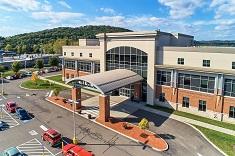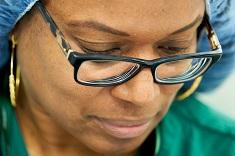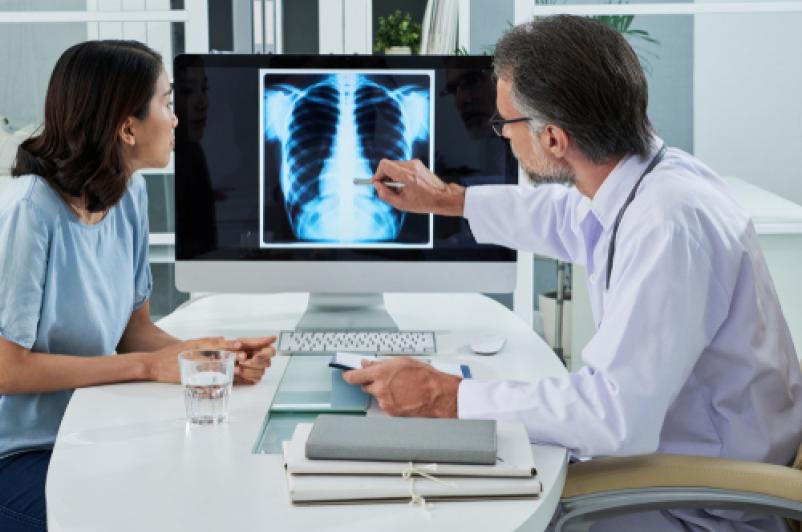
Lung cancer is one of the most common cancers in New York, according to the New York State Department of Health. Every year, more than 14,000 citizens are diagnosed with the disease. Recently, Dianne Moore, a 75-year-old resident of Cincinnatus, New York, unfortunately found herself to be one of those statistics.
Dianne smoked for about 50 years and, upon the recommendation of her doctor, started getting regular lung cancer screenings years ago. In 2021, her doctor identified a spot on her lung and, by 2022 it had grown larger. Her doctor referred her to M. Farhan Nadeem,MD, cardiothoracic surgeon at the UHS Heart & Vascular Institute. Dr. Nadeem joined UHS in 2021 with extensive training in robotic thoracic surgery for cancerous nodules in patients’ lungs. Dianne is one of his first patients at UHS to undergo this minimally invasive procedure.
The Advantages of Robotic Surgery
Dr. Nadeem explains how the minimally invasive robotic surgery works: “We use it to isolate patients’ nodules, sample those nodules to get results on whether they are cancerous and then complete the procedure if they are,” he says. “Compared to the traditional method, the risk of complications with the robot is very low. The length of stay is also shorter, and there are fewer transfusions and less blood loss.”
Using the robot to perform this procedure reduces the usual hospital stay significantly—from five to seven days down to one or two. Another important advantage is the size and placement of the incisions required. The incisions made by the robot are much smaller compared to the traditional procedure and they are lower on the chest, causing less pain and fewer complications.
The robotic method is also better for sampling lymph nodes that will be evaluated for the presence of cancer, which increases the accuracy of the diagnosis. “You’re surer of the patient’s stage of cancer, and, because of that, you’re surer that you’re recommending the right treatment for that cancer.The best thing you can do to improve survival for cancer patients is to treat them appropriately right away, and this procedure increases the accuracy of treatment.”
Giving Patients Peace of Mind
For Dianne, the procedure was literally lifesaving. Dr. Nadeem identified that her nodule was cancerous and was able to remove it. “My heart just about stopped, I was so glad,” she says. “It was the best choice I could have made. I didn’t know what to expect with chemo and all of the other stuff, and I didn’t have to do that—he told me I was cancer-free with no need for chemo or radiation.”
Dianne also appreciated the minimally invasive nature of the procedure, compared to the traditional method. “It was a good experience. I can’t imagine if they had to open my chest for the procedure how much longer recovery would take.”
But the most important part was the peace of mind it gave her: “It’s amazing knowing that I will be around for my kids for a longer time.”
Screening Time
According to the American Lung Association, lung cancer is the No. 1 cause of cancer deaths among men and women in the United States. However, the survival rate for lung cancer continues to increase, largely due to increased screening for the disease.
Bridget Metzler, director of Cardiac Services at UHS, notes why early diagnosis is so important: “The earlier we can treat lung cancer, the better. Patients’ survival rates are much higher when their cancer is detected earlier.”
Dianne Moore endorses regular lung cancer screening because it can save and improve lives.
“Every six months, I would get the scan,” she says. “I’m definitely glad I followed up on it because it could have been a lot worse for me.”
For more information about cancer screening at UHS, visit nyuhs.org/care-treatment/cancer.


